In the world of mountaineering, there are individuals who stand out as legends, their names etched into the annals of history for their daring ascents and indomitable spirit. These remarkable mountaineers not only reached the summits of the world’s tallest peaks but also inspired generations with their courage and determination. In this comprehensive article, we pay homage to 10 legendary mountaineers whose feats in the high-altitude realms continue to awe and inspire.
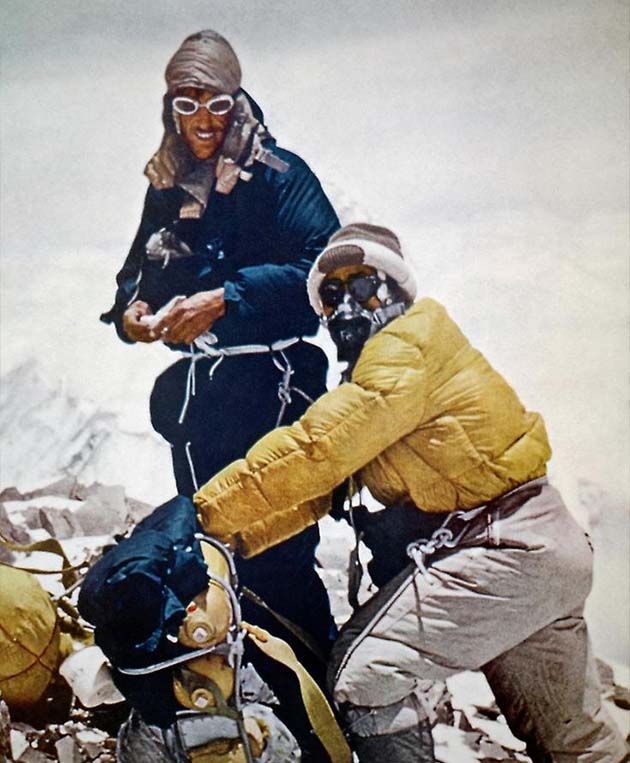
1. Sir Edmund Hillary and Tenzing Norgay:
Conquering Everest's Summit - 1953:
Sir Edmund Hillary from New Zealand and Tenzing Norgay, a Sherpa of Nepal, accomplished one of the most iconic feats in mountaineering history when they became the first to conquer the world’s highest peak, Mount Everest. Their successful ascent in 1953 is a testament to human resilience and teamwork.
Sir Edmund Hillary, a beekeeper from New Zealand, and Tenzing Norgay, a Tibetan Sherpa, embarked on an expedition that would change the course of mountaineering history. The formidable challenges posed by Mount Everest, the Earth’s highest point at 29,032 feet (8,849 meters), had deterred numerous previous attempts. However, Hillary and Norgay’s unwavering determination and unparalleled skillset made the impossible, possible.
The journey to the summit was fraught with perilous obstacles. The extreme altitude, bone-chilling temperatures, and treacherous terrain tested their physical and mental fortitude. They navigated through the Khumbu Icefall, a chaotic maze of towering ice seracs, and ascended the perilous Lhotse Face, a steep ice slope. Battling exhaustion and the ever-present threat of avalanches, they pressed on.
On May 29, 1953, after weeks of arduous climbing, Hillary and Norgay reached the summit of Mount Everest. Their achievement was a crowning moment in the history of mountaineering and a symbol of human determination. They had triumphed where others had failed, proving that with courage, collaboration, and unwavering perseverance, the highest peaks could be conquered.
1. Sir Edmund Hillary and Tenzing Norgay:

Conquering Everest's Summit - 1953:
Sir Edmund Hillary from New Zealand and Tenzing Norgay, a Sherpa of Nepal, accomplished one of the most iconic feats in mountaineering history when they became the first to conquer the world’s highest peak, Mount Everest. Their successful ascent in 1953 is a testament to human resilience and teamwork.
Sir Edmund Hillary, a beekeeper from New Zealand, and Tenzing Norgay, a Tibetan Sherpa, embarked on an expedition that would change the course of mountaineering history. The formidable challenges posed by Mount Everest, the Earth’s highest point at 29,032 feet (8,849 meters), had deterred numerous previous attempts. However, Hillary and Norgay’s unwavering determination and unparalleled skillset made the impossible, possible.
The journey to the summit was fraught with perilous obstacles. The extreme altitude, bone-chilling temperatures, and treacherous terrain tested their physical and mental fortitude. They navigated through the Khumbu Icefall, a chaotic maze of towering ice seracs, and ascended the perilous Lhotse Face, a steep ice slope. Battling exhaustion and the ever-present threat of avalanches, they pressed on.
On May 29, 1953, after weeks of arduous climbing, Hillary and Norgay reached the summit of Mount Everest. Their achievement was a crowning moment in the history of mountaineering and a symbol of human determination. They had triumphed where others had failed, proving that with courage, collaboration, and unwavering perseverance, the highest peaks could be conquered.
2. Reinhold Messner
A Pioneer of Solo Ascents:
Reinhold Messner of Italy is often regarded as one of the greatest mountaineers of all time. His solo ascent of Mount Everest without supplemental oxygen in 1980 set a milestone in high-altitude climbing. Messner’s bold and unconventional approach to mountaineering has left an indelible mark on the sport.
Reinhold Messner’s name is synonymous with audacious solo climbs in some of the most challenging environments on Earth. Born in South Tyrol, Italy, in 1944, Messner developed a deep passion for the mountains at a young age. His relentless pursuit of summit after summit set new standards for what was considered possible in the world of mountaineering.
The ascent that catapulted Messner to legendary status was his solo climb of Mount Everest. What set this feat apart was his decision to forgo the use of supplemental oxygen, a critical lifeline for most climbers at such high altitudes. This decision pushed the boundaries of human endurance and redefined the possibilities of high-altitude climbing.
On August 20, 1980, Messner reached the summit of Mount Everest, becoming the first person to do so without supplemental oxygen. This remarkable achievement showcased his unparalleled physical and mental strength. Messner’s audacity and willingness to explore the limits of human capability continue to inspire climbers and adventurers worldwide.
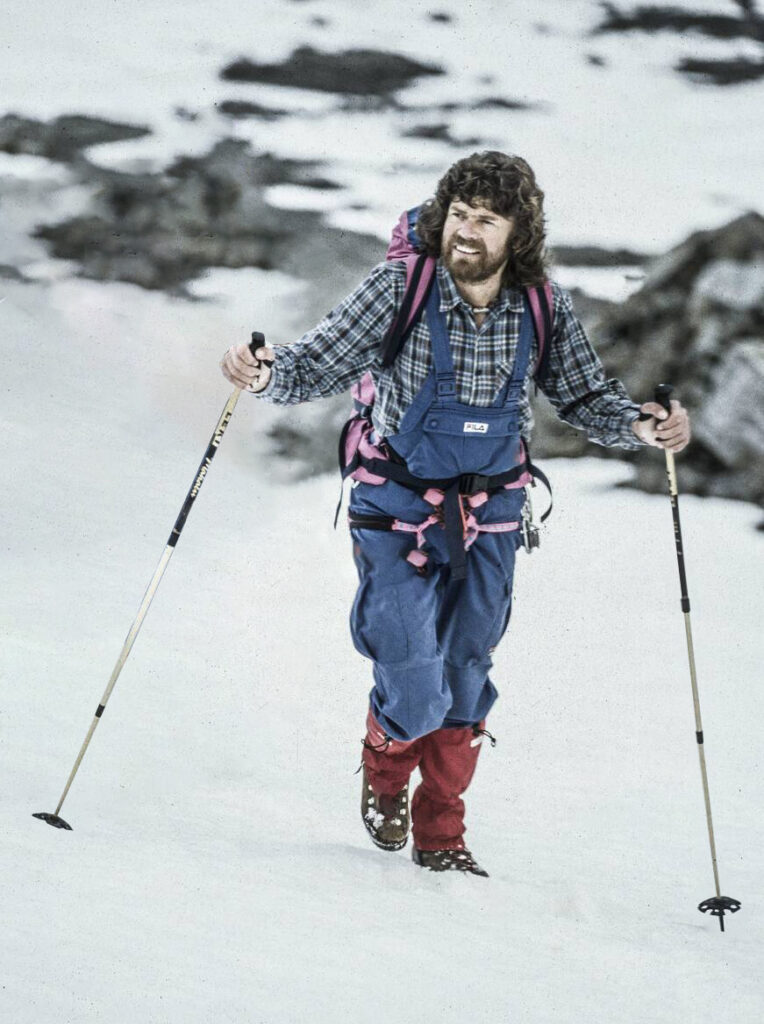
2. Reinhold Messner

A Pioneer of Solo Ascents:
Reinhold Messner of Italy is often regarded as one of the greatest mountaineers of all time. His solo ascent of Mount Everest without supplemental oxygen in 1980 set a milestone in high-altitude climbing. Messner’s bold and unconventional approach to mountaineering has left an indelible mark on the sport.
Reinhold Messner’s name is synonymous with audacious solo climbs in some of the most challenging environments on Earth. Born in South Tyrol, Italy, in 1944, Messner developed a deep passion for the mountains at a young age. His relentless pursuit of summit after summit set new standards for what was considered possible in the world of mountaineering.
The ascent that catapulted Messner to legendary status was his solo climb of Mount Everest. What set this feat apart was his decision to forgo the use of supplemental oxygen, a critical lifeline for most climbers at such high altitudes. This decision pushed the boundaries of human endurance and redefined the possibilities of high-altitude climbing.
On August 20, 1980, Messner reached the summit of Mount Everest, becoming the first person to do so without supplemental oxygen. This remarkable achievement showcased his unparalleled physical and mental strength. Messner’s audacity and willingness to explore the limits of human capability continue to inspire climbers and adventurers worldwide.
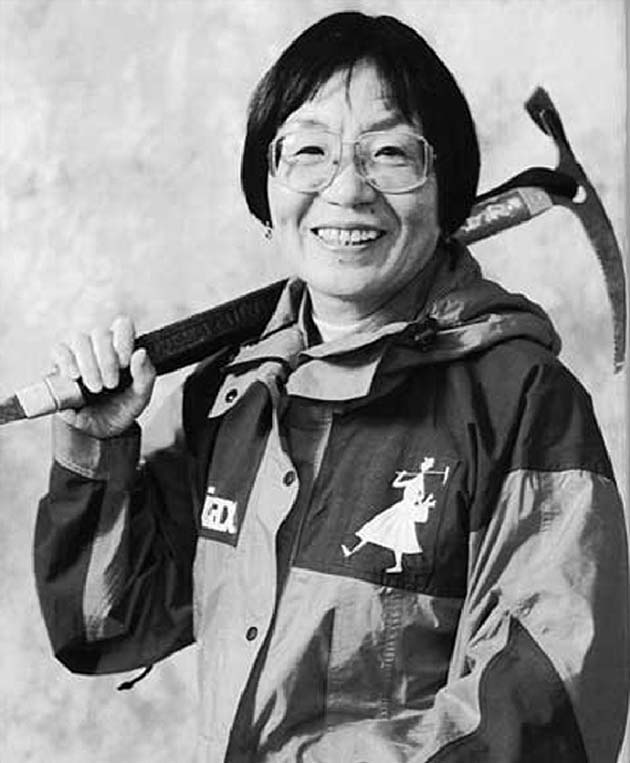
3. Junko Tabei
Breaking Gender Barriers:
Junko Tabei, a Japanese mountaineer, made history in 1975 by becoming the first woman to reach the summit of Mount Everest. Her remarkable achievement not only shattered gender barriers but also paved the way for countless female mountaineers to follow in her footsteps.
In a world where mountaineering was often dominated by men, Junko Tabei emerged as a trailblazer for women in the sport. Born in Japan in 1939, she displayed an early affinity for the mountains and embarked on a journey that would rewrite the rules of mountaineering.
Tabei’s historic ascent of Mount Everest in 1975 was groundbreaking. Not only did she become the first woman to stand on the world’s highest peak, but she also challenged stereotypes and societal norms. Her climb was a resounding message that gender should never be a barrier to pursuing one’s dreams.
Following her Everest triumph, Tabei continued to achieve remarkable feats. She completed the Seven Summits, a challenge to climb the highest peak on each continent, and founded the Japan Women’s Mountaineering Club, fostering a supportive community for female climbers. Tabei’s legacy continues to inspire women worldwide to break free from constraints and conquer their own summits.
3. Junko Tabei

Breaking Gender Barriers:
Junko Tabei, a Japanese mountaineer, made history in 1975 by becoming the first woman to reach the summit of Mount Everest. Her remarkable achievement not only shattered gender barriers but also paved the way for countless female mountaineers to follow in her footsteps.
In a world where mountaineering was often dominated by men, Junko Tabei emerged as a trailblazer for women in the sport. Born in Japan in 1939, she displayed an early affinity for the mountains and embarked on a journey that would rewrite the rules of mountaineering.
Tabei’s historic ascent of Mount Everest in 1975 was groundbreaking. Not only did she become the first woman to stand on the world’s highest peak, but she also challenged stereotypes and societal norms. Her climb was a resounding message that gender should never be a barrier to pursuing one’s dreams.
Following her Everest triumph, Tabei continued to achieve remarkable feats. She completed the Seven Summits, a challenge to climb the highest peak on each continent, and founded the Japan Women’s Mountaineering Club, fostering a supportive community for female climbers. Tabei’s legacy continues to inspire women worldwide to break free from constraints and conquer their own summits.
4. Chris Bonington
A Lifetime of Alpine Excellence:
Sir Chris Bonington, a British mountaineer, has had a prolific climbing career that spans decades. He has successfully summited numerous peaks, including the North Face of the Eiger and the South Face of Annapurna. His contributions to the mountaineering world extend beyond his own ascents through mentorship and leadership.
Sir Chris Bonington’s name is synonymous with high-altitude achievements and a lifelong dedication to the mountains. Born in 1934, in England, Bonington’s early climbing experiences in the British Isles ignited a passion that would lead him to the world’s most challenging peaks.
One of Bonington’s most notable achievements was his ascent of the North Face of the Eiger in 1962, a route notorious for its treacherous conditions. His success in this endeavor solidified his reputation as one of the world’s top climbers.
Another remarkable feat in Bonington’s climbing career was the 1970 expedition to the South Face of Annapurna. This daring expedition resulted in the first successful ascent of the formidable South Face, a route previously considered nearly impossible.
Beyond his personal achievements, Bonington’s influence on the mountaineering community cannot be overstated. He served as the president of the Alpine Club and the British Mountaineering Council, playing a pivotal role in shaping the future of climbing in the United Kingdom. His mentorship and leadership have inspired generations of climbers to push their boundaries and seek new summits.

4. Chris Bonington

A Lifetime of Alpine Excellence:
Sir Chris Bonington, a British mountaineer, has had a prolific climbing career that spans decades. He has successfully summited numerous peaks, including the North Face of the Eiger and the South Face of Annapurna. His contributions to the mountaineering world extend beyond his own ascents through mentorship and leadership.
Sir Chris Bonington’s name is synonymous with high-altitude achievements and a lifelong dedication to the mountains. Born in 1934, in England, Bonington’s early climbing experiences in the British Isles ignited a passion that would lead him to the world’s most challenging peaks.
One of Bonington’s most notable achievements was his ascent of the North Face of the Eiger in 1962, a route notorious for its treacherous conditions. His success in this endeavor solidified his reputation as one of the world’s top climbers.
Another remarkable feat in Bonington’s climbing career was the 1970 expedition to the South Face of Annapurna. This daring expedition resulted in the first successful ascent of the formidable South Face, a route previously considered nearly impossible.
Beyond his personal achievements, Bonington’s influence on the mountaineering community cannot be overstated. He served as the president of the Alpine Club and the British Mountaineering Council, playing a pivotal role in shaping the future of climbing in the United Kingdom. His mentorship and leadership have inspired generations of climbers to push their boundaries and seek new summits.

5. Reinhard Karl
A Tragic Pioneer:
Reinhard Karl, a German mountaineer, is remembered for his pioneering spirit and tragic end. He was the first to summit Gasherbrum I, but sadly, he lost his life during a descent from the mountain. His daring exploration of uncharted territory left a lasting impact on the world of high-altitude climbing.
Reinhard Karl’s brief yet impactful mountaineering career was marked by his relentless pursuit of new heights. Born in Germany in 1952, Karl displayed a natural inclination for adventure from a young age. His passion for the mountains led him to the Himalayas, where he would make history.
In 1984, Karl achieved a significant milestone by becoming the first person to reach the summit of Gasherbrum I, one of the formidable 8,000-meter peaks. This achievement showcased his remarkable climbing skills and tenacity in the face of extreme challenges.
Tragically, Karl’s descent from Gasherbrum was his last. He lost his life during the treacherous journey back to base camp. His passing served as a stark reminder of the unforgiving nature of high-altitude mountaineering. Despite the tragedy, Reinhard Karl’s legacy endures as a testament to the pursuit of the unknown and the human spirit’s indomitable will to explore uncharted territory.
5. Reinhard Karl

A Tragic Pioneer:
Reinhard Karl, a German mountaineer, is remembered for his pioneering spirit and tragic end. He was the first to summit Gasherbrum I, but sadly, he lost his life during a descent from the mountain. His daring exploration of uncharted territory left a lasting impact on the world of high-altitude climbing.
Reinhard Karl’s brief yet impactful mountaineering career was marked by his relentless pursuit of new heights. Born in Germany in 1952, Karl displayed a natural inclination for adventure from a young age. His passion for the mountains led him to the Himalayas, where he would make history.
In 1984, Karl achieved a significant milestone by becoming the first person to reach the summit of Gasherbrum I, one of the formidable 8,000-meter peaks. This achievement showcased his remarkable climbing skills and tenacity in the face of extreme challenges.
Tragically, Karl’s descent from Gasherbrum I would be his last. He lost his life during the treacherous journey back to base camp. His passing served as a stark reminder of the unforgiving nature of high-altitude mountaineering. Despite the tragedy, Reinhard Karl’s legacy endures as a testament to the pursuit of the unknown and the human spirit’s indomitable will to explore uncharted territory.
6. Hermann Buhl
The Unconventional Austrian:
Hermann Buhl, an Austrian climber, is celebrated for his solo ascent of Nanga Parbat in 1953. His unconventional approach and unparalleled determination made him a trailblazer in the world of mountaineering. Buhl’s legacy lives on as an inspiration to those who dare to push the boundaries of possibility.
Hermann Buhl’s mountaineering career was characterized by audacious climbs and a penchant for pushing the limits of human potential. Born in Austria in 1924, Buhl’s early forays into climbing laid the foundation for a remarkable journey into the world’s highest peaks.
Buhl’s most iconic achievement was his solo ascent of Nanga Parbat in 1953, a feat that earned him legendary status in the mountaineering community. What set this ascent apart was not only the peak’s formidable reputation but also Buhl’s decision to climb alone without supplemental oxygen.
His journey to the summit was filled with perilous challenges. Buhl battled extreme cold, fierce winds, and sheer exhaustion as he made his way up Nanga Parbat’s treacherous slopes. His tenacity and determination saw him through to the top, where he became the first person to conquer the peak.
Tragically, Buhl’s triumph was marred by a fatal fall during the descent. His daring solo ascent and tragic descent on Nanga Parbat remain a testament to the audacity and courage of those who choose to venture into the world’s most challenging environments.
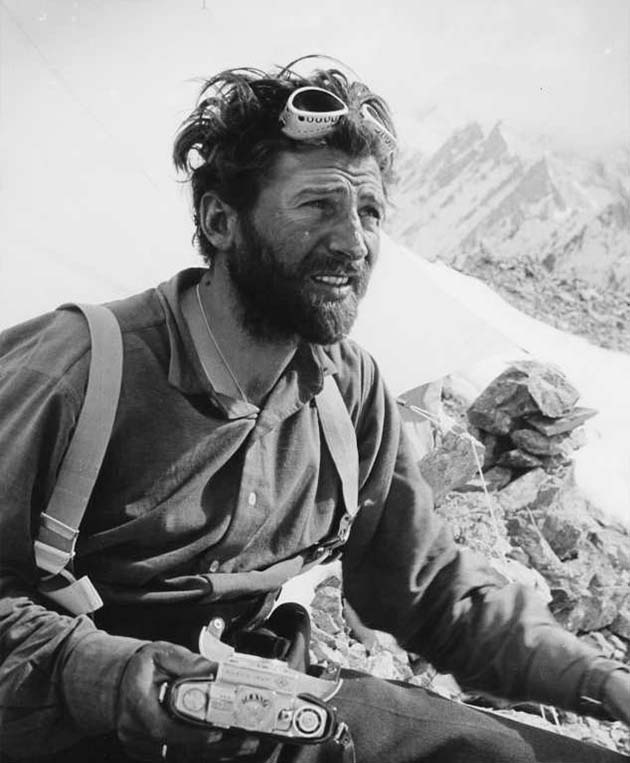
6. Hermann Buhl

The Unconventional Austrian:
Hermann Buhl, an Austrian climber, is celebrated for his solo ascent of Nanga Parbat in 1953. His unconventional approach and unparalleled determination made him a trailblazer in the world of mountaineering. Buhl’s legacy lives on as an inspiration to those who dare to push the boundaries of possibility.
Hermann Buhl’s mountaineering career was characterized by audacious climbs and a penchant for pushing the limits of human potential. Born in Austria in 1924, Buhl’s early forays into climbing laid the foundation for a remarkable journey into the world’s highest peaks.
Buhl’s most iconic achievement was his solo ascent of Nanga Parbat in 1953, a feat that earned him legendary status in the mountaineering community. What set this ascent apart was not only the peak’s formidable reputation but also Buhl’s decision to climb alone without supplemental oxygen.
His journey to the summit was filled with perilous challenges. Buhl battled extreme cold, fierce winds, and sheer exhaustion as he made his way up Nanga Parbat’s treacherous slopes. His tenacity and determination saw him through to the top, where he became the first person to conquer the peak.
Tragically, Buhl’s triumph was marred by a fatal fall during the descent. His daring solo ascent and tragic descent on Nanga Parbat remain a testament to the audacity and courage of those who choose to venture into the world’s most challenging environments.
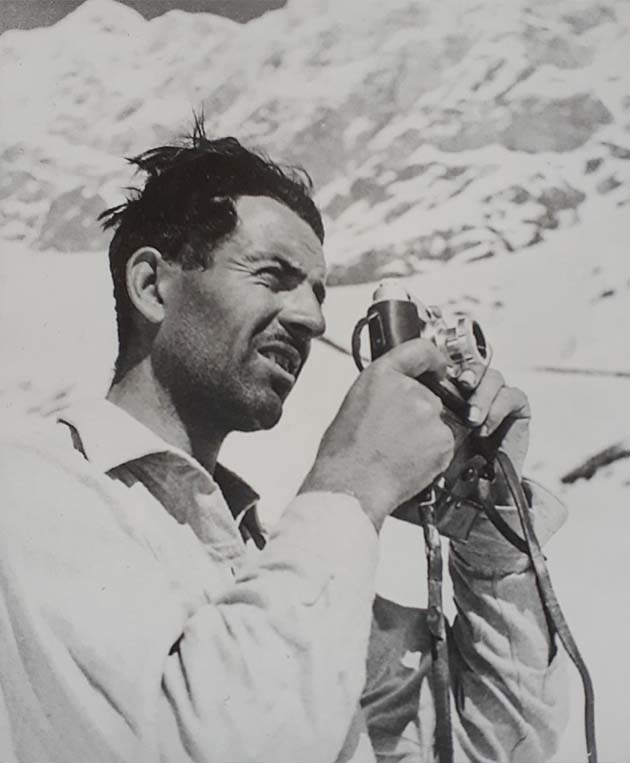
7. Maurice Herzog
Annapurna's Conqueror:
Maurice Herzog, a French alpinist, led the first successful ascent of Annapurna in 1950. His triumph, however, came at a great cost as he and his team endured severe frostbite. Herzog’s account of the expedition in his book, “Annapurna,” remains a classic in mountaineering literature.
Maurice Herzog’s name is forever associated with the daring ascent of Annapurna, one of the world’s 8,000-meter peaks, in the Himalayas. Born in France in 1919, Herzog’s passion for mountaineering would lead him to an expedition that would make history.
In 1950, Herzog and his team embarked on the first successful ascent of Annapurna, a feat considered one of the most significant achievements in the annals of mountaineering. The challenges they faced were monumental, from treacherous avalanches to extreme cold and altitude sickness. Despite these obstacles, they persevered, reaching the summit on June 3, 1950.
However, their triumph was marred by the extreme conditions they encountered during the descent. Severe frostbite took its toll, and Herzog and his team endured agonizing pain as they made their way back to safety. Herzog himself would lose all his fingers and toes due to frostbite, a high price to pay for their historic achievement.
Herzog’s gripping account of the expedition, “Annapurna,” became a classic in mountaineering literature, capturing the essence of triumph and tragedy in the world of high-altitude climbing.
7. Maurice Herzog

Annapurna's Conqueror:
Maurice Herzog, a French alpinist, led the first successful ascent of Annapurna in 1950. His triumph, however, came at a great cost as he and his team endured severe frostbite. Herzog’s account of the expedition in his book, “Annapurna,” remains a classic in mountaineering literature.
Maurice Herzog’s name is forever associated with the daring ascent of Annapurna, one of the world’s 8,000-meter peaks, in the Himalayas. Born in France in 1919, Herzog’s passion for mountaineering would lead him to an expedition that would make history.
In 1950, Herzog and his team embarked on the first successful ascent of Annapurna, a feat considered one of the most significant achievements in the annals of mountaineering. The challenges they faced were monumental, from treacherous avalanches to extreme cold and altitude sickness. Despite these obstacles, they persevered, reaching the summit on June 3, 1950.
However, their triumph was marred by the extreme conditions they encountered during the descent. Severe frostbite took its toll, and Herzog and his team endured agonizing pain as they made their way back to safety. Herzog himself would lose all his fingers and toes due to frostbite, a high price to pay for their historic achievement.
Herzog’s gripping account of the expedition, “Annapurna,” became a classic in mountaineering literature, capturing the essence of triumph and tragedy in the world of high-altitude climbing.
8. Jerzy Kukuczka
The Polish Alpinist
Jerzy Kukuczka, a Polish climber, achieved the incredible feat of ascending all 14 of the world’s 8,000-meter peaks. His relentless pursuit of these summits, often in the harshest conditions, solidified his reputation as a mountaineering legend.
Jerzy Kukuczka, born in Poland in 1948, is remembered as one of the most accomplished high-altitude climbers in history. His quest to conquer all 14 of the world’s 8,000-meter peaks, known as the “Eight-thousanders,” was a remarkable odyssey that showcased his unparalleled determination and skill.
Kukuczka’s journey to complete the Eight-thousanders was a grueling one. He faced extreme cold, avalanches, and technical challenges that tested his limits. His ascent of these peaks, often without supplemental oxygen, showcased his physical and mental fortitude.
Tragically, Kukuczka lost his life during a climb in the Himalayas in 1989. His legacy, however, endures as a testament to the pursuit of excellence and the indomitable spirit of mountaineers who dare to dream big.

8. Jerzy Kukuczka

The Polish Alpinist
Jerzy Kukuczka, a Polish climber, achieved the incredible feat of ascending all 14 of the world’s 8,000-meter peaks. His relentless pursuit of these summits, often in the harshest conditions, solidified his reputation as a mountaineering legend.
Jerzy Kukuczka, born in Poland in 1948, is remembered as one of the most accomplished high-altitude climbers in history. His quest to conquer all 14 of the world’s 8,000-meter peaks, known as the “Eight-thousanders,” was a remarkable odyssey that showcased his unparalleled determination and skill.
Kukuczka’s journey to complete the Eight-thousanders was a grueling one. He faced extreme cold, avalanches, and technical challenges that tested his limits. His ascent of these peaks, often without supplemental oxygen, showcased his physical and mental fortitude.
Tragically, Kukuczka lost his life during a climb in the Himalayas in 1989. His legacy, however, endures as a testament to the pursuit of excellence and the indomitable spirit of mountaineers who dare to dream big.

9. Wanda Rutkiewicz
Queen of the Himalayas:
Wanda Rutkiewicz, a Polish climber, made history as the first woman to conquer K2, the world’s second-highest peak. Her tenacity and passion for the mountains led her to become a trailblazer for female climbers in high-altitude mountaineering.
Wanda Rutkiewicz, born in Poland in 1943, possessed an unwavering determination to conquer some of the world’s highest peaks. Her name is forever etched in mountaineering history as the first woman to reach the summit of K2, the second-highest peak on Earth.
Rutkiewicz’s ascent of K2 in 1986 was a historic achievement. It not only showcased her climbing prowess but also shattered gender barriers in the world of high-altitude mountaineering. Her success inspired countless women to pursue their dreams in the mountains, proving that determination knows no bounds.
Tragically, Rutkiewicz’s life was cut short during an expedition to Kangchenjunga in 1992. Her legacy, however, endures as a symbol of courage and determination, serving as an inspiration to women climbers worldwide.
9. Wanda Rutkiewicz

Queen of the Himalayas:
Wanda Rutkiewicz, a Polish climber, made history as the first woman to conquer K2, the world’s second-highest peak. Her tenacity and passion for the mountains led her to become a trailblazer for female climbers in high-altitude mountaineering.
Wanda Rutkiewicz, born in Poland in 1943, possessed an unwavering determination to conquer some of the world’s highest peaks. Her name is forever etched in mountaineering history as the first woman to reach the summit of K2, the second-highest peak on Earth.
Rutkiewicz’s ascent of K2 in 1986 was a historic achievement. It not only showcased her climbing prowess but also shattered gender barriers in the world of high-altitude mountaineering. Her success inspired countless women to pursue their dreams in the mountains, proving that determination knows no bounds.
Tragically, Rutkiewicz’s life was cut short during an expedition to Kangchenjunga in 1992. Her legacy, however, endures as a symbol of courage and determination, serving as an inspiration to women climbers worldwide.
10. Gaston Rébuffat
The French Alpine Maestro:
Gaston Rébuffat, a French mountaineer, was renowned for his exceptional skills in alpine climbing. He left an indelible mark on the sport through his stunning ascents in the French Alps and his contributions to mountaineering literature.
Gaston Rébuffat, born in France in 1921, was a master of alpine climbing. His remarkable achievements in the French Alps, particularly in the Mont Blanc massif, showcased his exceptional skills and deep connection with the mountains.
One of Rébuffat’s most notable climbs was the first ascent of the South Face of the Drus in the Mont Blanc massif in 1955. This challenging route had been deemed impossible by many, but Rébuffat’s expertise and audacity made it a reality.
In addition to his climbing prowess, Rébuffat was a prolific writer and filmmaker. His books and documentaries, including “Starlight and Storm” and “On Snow and Rock,” captured the essence of mountaineering and brought the beauty of the mountains to a wider audience.
Gaston Rébuffat’s contributions to climbing and mountaineering literature continue to inspire climbers and adventurers, emphasizing the importance of both technical skill and an intimate connection with the natural world.
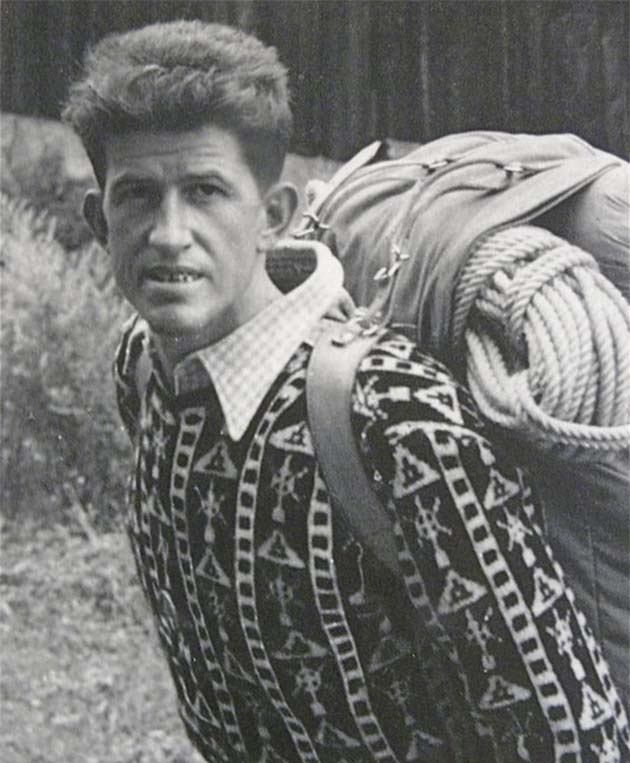
10. Gaston Rébuffat

The French Alpine Maestro:
Gaston Rébuffat, a French mountaineer, was renowned for his exceptional skills in alpine climbing. He left an indelible mark on the sport through his stunning ascents in the French Alps and his contributions to mountaineering literature.
Gaston Rébuffat, born in France in 1921, was a master of alpine climbing. His remarkable achievements in the French Alps, particularly in the Mont Blanc massif, showcased his exceptional skills and deep connection with the mountains.
One of Rébuffat’s most notable climbs was the first ascent of the South Face of the Drus in the Mont Blanc massif in 1955. This challenging route had been deemed impossible by many, but Rébuffat’s expertise and audacity made it a reality.
In addition to his climbing prowess, Rébuffat was a prolific writer and filmmaker. His books and documentaries, including “Starlight and Storm” and “On Snow and Rock,” captured the essence of mountaineering and brought the beauty of the mountains to a wider audience.
Gaston Rébuffat’s contributions to climbing and mountaineering literature continue to inspire climbers and adventurers, emphasizing the importance of both technical skill and an intimate connection with the natural world.
These legendary mountaineers, through their extraordinary accomplishments, have not only conquered towering peaks but have also shaped the very essence of mountaineering itself. Their unwavering determination, courage, and love for the mountains serve as an enduring source of inspiration for all who seek to challenge the heights of human potential.
Mountaineering, as a pursuit, represents the epitome of human ambition and resilience. It is a testament to our ability to conquer the most formidable natural challenges that our planet presents. The stories of these 10 legendary mountaineers remind us that the human spirit knows no bounds when it comes to exploration and the pursuit of dreams.
In the face of extreme adversity and danger, they found the strength to overcome insurmountable odds. Their achievements are not only a testament to their individual courage but also a collective tribute to the spirit of human exploration.
As we look back on the legacies of these mountaineers, it becomes evident that their influence extends far beyond the high-altitude peaks they conquered. They have left an indelible mark on the sport of mountaineering, inspiring countless others to follow in their footsteps and seek out their own adventures in the mountains.
Their stories also serve as a reminder of the fragility of human life in the world’s most extreme environments. Mountaineering is not without its risks, and the mountains demand the utmost respect and preparation from those who dare to ascend them. These mountaineers, in their pursuit of greatness, also paid the ultimate price, reminding us of the unforgiving nature of the high-altitude world.
In conclusion, the 10 legendary mountaineers we’ve explored in this article have earned their places in history through their exceptional feats and unwavering determination. They have scaled the world’s highest peaks, shattered records, and paved the way for future generations of mountaineers. Their names will forever echo in the annals of mountaineering as a testament to the triumph of the human spirit against all odds.

